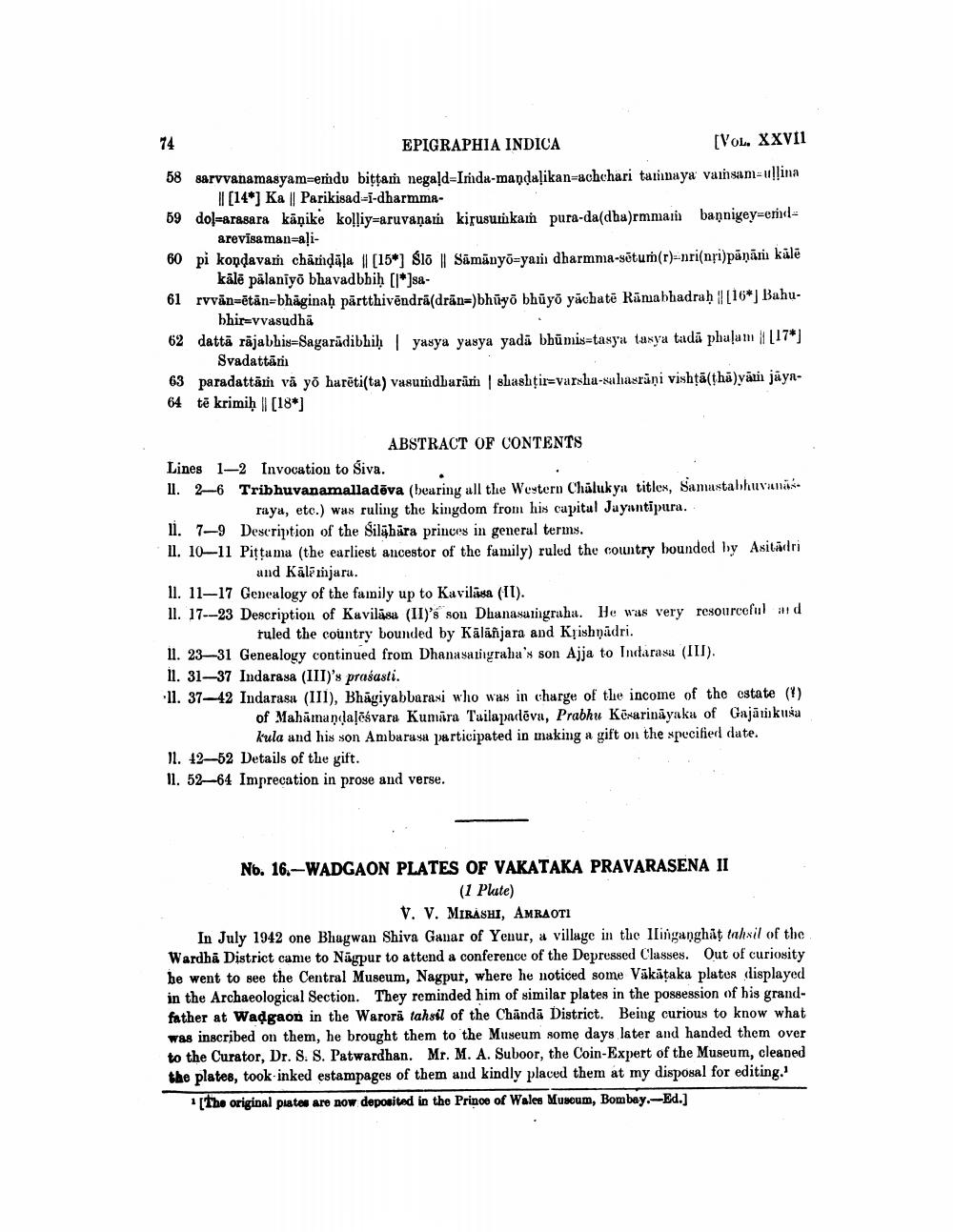________________
EPIGRAPHIA INDICA
[VOL. XXVII 58 sarvvanamasyam=emdu bittaṁ negaļd=Inda-mandaļikan=achchari tarmaya varsam-ulļina
|| [14*) Ka | Parikisad=i-dharmma59 doļ=arasara kāņike kolliy=aruvanan kirusurikaṁ pura-da(dha)rmmari baņnigey=cni
arevisaman-ali60 pi kondavam chandala || [15*] Ślő || Sāmānyo=yari dharmma-sõtur(r)nri(nri)pāņārı külë
kālē pālaniyo bhavadbhiḥ (I*]sa61 rvvān=ētān=bhaginapārtthivēndra(drān=)bhūyo bhūyo yachatë Rāmabhadrah ||(16*J Bahu
bhir=vvasudha 62 dattā rājabhis-Sagarādibhih yasya yasya yada bhūmis-tasya tanya tadã phulam (17*]
Svadattari 63 paradattāni vā yo harēti(ta) vasuundbarām shashtir=varsha-sahasrani vishtā(thā)yāti jāya64 të krimiḥ || (18*]
ABSTRACT OF CONTENTS Lines 1–2 Invocation to Siva. . II. 26 Tribhuvanamalladöva (bearing all the Western Chäluky titlen, Samustabhuvumas.
raya, etc.) was ruling the kingdom from his cupitul Juyantipura. 11. 7–9 Description of the Silāhāra princes in general terms. 11. 10–11 Pittama (the earliest ancestor of the family) ruled the country bounded by Asitari
and Kālamjaru. 11. 11-17 Genealogy of the family up to Kavilasa (II). II. 17--23 Description of Kavilāsu (II)'s sou Dhanasarngruha. He was very resourceful ad
ruled the country bounded by Kālāñjara and Krishnädri. 11. 23–31 Genealogy continued from Dhanasa iyraha's son Ajja to Indarasu (III). 11. 31–37 Indarasa (III)'s prasasti. 11. 37-42 Indarası (111), Bhāgiyabbarasi who was in charge of the income of the estate (*)
of Mahamaņılaļēsvara Kumāra Tailapadlēva, Prabhu Kēxarinayaka of Gajātikusu
kula and his son Ambarusa participated in making a gift on the specified date. 11. 42—52 Details of the gift. 11. 52-64 Imprecation in prose and verse.
No. 16.--WADGAON PLATES OF VAKATAKA PRAVARASENA II
(1 Plate)
V. V. MIRASHI, AMRAOTI In July 1942 one Bhagwan Shiva Ganar of Yenur, a village in the linganghäț tahsil of the Wardha District came to Nagpur to attend a conference of the Depressed Classes. Out of curiosity he went to see the Central Museum, Nagpur, where he noticed some Vākātaka plates displayed in the Archaeological Section. They reminded him of similar plates in the possession of his grandfather at Wadgaon in the Warorā tahsil of the Chanda District. Being curious to know what was inscribed on them, he brought them to the Museum some days later and handed them over to the Curator, Dr. S. S. Patwardhan. Mr. M. A. Suboor, the Coin-Expert of the Museum, cleaned the plates, took-inked estampages of them and kindly placed them at my disposal for editing.'
[The original plates are now deposited in the Prince of Wales Museum, Bombay.-Ed.]




